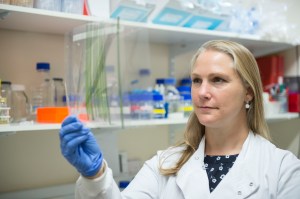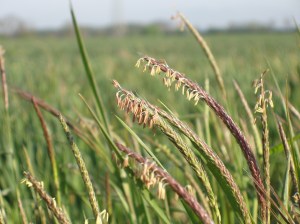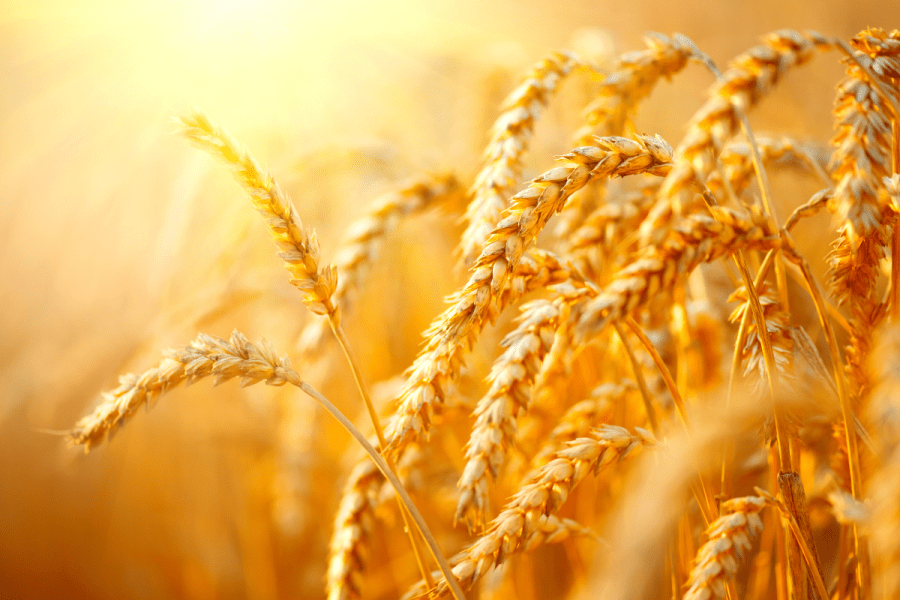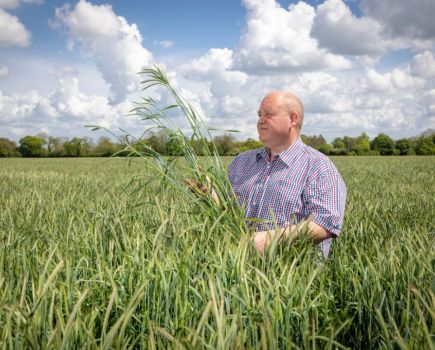Insights into breeding research on a gene edited milling wheat variety and understanding how blackgrass thrives in waterlogged conditions were two of the topics discussed at a recent conference organised by the Association of Applied Biologists. CPM spoke to two of the researchers to find out more.
“Our initial concerns were whether we were able to reduce the level of free asparagine using gene editing technology.”
By Heather Briggs
Research is already well underway to assess how gene editing can help improve wheat flour and reduce the formation of the harmful substance, acrylamide.
First discovered in many common foods in 2002, acrylamide is classed as a Group 2A cancer risk (defined as probably carcinogenic), explains Prof Nigel Halford of Rothamsted Research.

The flour from two gene edited lines of Cadenza winter wheat reduced acrylamide production by 45%, says Nigel Halford.
“Free asparagine, glucose and fructose are precursors of acrylamide, so identifying cultivars with low levels of these precursors is important, but with the challenge that the ensuing texture and flavour shouldn’t be compromised.”
The availability of low acrylamide wheat would help compliance with evolving regulations without costly changes to production lines or reductions in product quality, explains Nigel.
In wheat flour, acrylamide formation is determined by asparagine levels and asparagine accumulation increases dramatically in response to lack of sulphur and nitrogen applications.
“Nitrogen is essential for optimum yield and quality but it’s important there’s sufficient sulphur available or the nitrogen taken up by the plant will be stored in the grain as asparagine instead of protein. This results in more acrylamide formation when the grain is processed,” he explains.
Last year, the first outdoor field trial of a gene edited version of Cadenza winter wheat showed it was able to produce a similar yield and quality to the original variety. To create the low asparagine cultivar, Nigel’s team knocked out one of the genes for asparagine metabolism (ASN2) using CRISPR-Cas 9 gene editing technology in Cadenza.
“Our initial concerns were whether we were able to reduce the level of free asparagine using gene editing technology. Once we had found this to be successful in the glasshouse, we needed to know whether the low free asparagine phenotype could be maintained in the field.”
Five replicated plots were set up, each with two lines of the new wheat, and assessments were made of crop emergence, yield, thousand grain weight and composition.
“We were very pleased to see there were no significant effects on yield or nitrogen content,” he says. “Nonetheless, we’re aware this was a trial on a single site in one year and asparagine concentration is responsive to temperature, rainfall and sulphur deficiency.”
Flour produced from the grain of the gene edited lines and from the Cadenza control plots was heated to 160°C and the acrylamide content was analysed. In the Cadenza flour, acrylamide formed an average concentration of 761 parts per billion, while those from the two gene edited lines were 427 and 421 parts per billion. This represents decreases of 44-45% compared with the Cadenza control.
Further trials will be undertaken in 2023. These will also include a double knockout in which a second gene, ASN1, is edited in addition to ASN2. These plants have even lower levels of asparagine when grown under glass.
“We don’t know yet how the double knockouts will perform in the field,” adds Nigel.
So how important is this discovery? The development of a commercial low asparagine wheat variety could have a significant impact on dietary acrylamide intake for consumers, he says. “Regulations on the possible carcinogen acrylamide are likely to become stricter in the European Union.
“This is likely to be in the form of maximum permitted levels – levels above which it would be illegal to sell a product. This would make things much more difficult for the food industry, although it’s not yet known whether the UK will do something similar about acrylamide levels.”
Approval for precision breeding techniques such as gene editing, which was used to create the low asparagine wheat, is likely to happen in England in the near future. The Genetic Technology (Precision Breeding) Bill passed through the House of Commons last year, and has just completed its passage through the House of Lords. It now requires one final reading in the House of Commons before receiving Royal Assent.
“This approval is central to adoption of crops with specific traits, such as low asparagine, because breeders will only develop gene edited plants if the right regulatory framework is in place and they’re confident they’ll achieve a return on their investment.”
Waterlogging tolerance
Understanding the traits that allow blackgrass (Alopecurus myosuroides) to thrive in arable systems under conditions such as waterlogging, drought, cold and heat is important and could provide clues for wheat breeding in the future, says plant molecular geneticist Dr Dana MacGregor of Rothamsted Research.
In a move away from research focused only on blackgrass herbicide resistance, Dana has been comparing the grassweed’s survival in waterlogged soil with that of wheat.

Understanding the genetics behind how blackgrass thrives in waterlogged conditions could provide clues for wheat breeding in the future, says Dana McGregor.
Reflecting on what is already well-known, she notes that in the field patches of blackgrass are associated with soils that have a high clay and organic matter content, poor structure and a high capacity to hold water. These are therefore often subject to waterlogging. But why blackgrass is found here and how it can survive while wheat cannot, isn’t well understood, she says.
Research is addressing this critical question by assessing responses of blackgrass and wheat grown side-by-side in waterlogged soils and by exploring the underlying basis, is looking for traits for tolerance and intolerance.
“Wheat doesn’t tolerate waterlogging very well and there’s quite a lot of data that shows that regardless of the timing of a waterlogging event, there’s always a yield penalty and the plants even suffer from short waterlogging events.
“Compare this to blackgrass where our biomass data – phenotypes like counting tillers, height of the longest leaf and fresh weight – shows that blackgrass actually prefers waterlogging and does better under wet conditions compared with controls.”
In a recently finished study, comparisons were made between a number of blackgrass populations from the Blackgrass Research Initiative (BGRI UK) at Rothamsted.
“We found a range of different phenotypes. Some of the blackgrass populations showed no difference when waterlogged, while some of them were bigger when grown in waterlogged soils. Interestingly, none were smaller.
“This implies that, in general, blackgrass tolerates waterlogging really well but we also are seeing genetic variability among blackgrass populations. So how well your blackgrass will survive depends on which population you have on-farm.”
Dana and her team are currently following up the work to determine the genetics underlying how blackgrass is able to survive waterlogging, using techniques such as metabolomics and transcriptomics to compare various wheat cultivars and populations of blackgrass.
As both wheat and blackgrass are from the same family of Gramineae, she believes there are lessons to be learned about which traits could be useful for breeding wheat with better tolerance to waterlogging.

Some of the blackgrass populations showed no difference when waterlogged, while some of them were bigger. None were smaller.
The trials form part of an initiative to predict how weeds will respond to climate change and also help farmers evaluate strategies in response to changes in pesticide regulations.
“Growers are having to become less reliant on chemical weed control due to herbicide resistance and the greater emphasis from government and consumers on low pesticide use. They are adopting longer rotations, integrated pest management (IPM) and other environmental strategies, and this will impact on the seedbed dynamics of weeds.
“Understanding the biology of blackgrass and what drives its weedy characteristics is therefore of significance to the best practices of farmers.
“There are other blackgrass traits that are probably going to become more important than just herbicide tolerance, such as how cultural control strategies may modify their dynamics.
“Understanding the whole biology of blackgrass through studies like this one will help us understand how to kill the grassweed more effectively under a range of different conditions and farming practices.”
This article was taken from the latest issue of CPM. For more articles like this, subscribe here.
Sign up for Crop Production Magazine’s FREE e-newsletter here.




